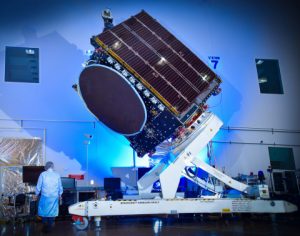According to latest statement by Maxar Technologies, a trusted partner and innovator in Earth Intelligence and Space Infrastructure, today announced that the BSAT-4b satellite, built for Broadcasting Satellite System Corporation (B-SAT), successfully launched today and is performing according to plan.
BSAT-4b deployed its solar arrays and began receiving and sending signals following a launch aboard an Ariane 5 rocket from the Arianespace launch base in Kourou, French Guiana. On August 16, 2020, BSAT-4b will begin firing its thrusters to begin its journey to its final geosynchronous orbit at 110 degrees East longitude.
Once in service, BSAT-4b will function as a back-up geostationary satellite to BSAT-4a, also built by Maxar, and co-located at 110 degrees East longitude. Maxar completed manufacturing both BSAT-4a and BSAT-4b well ahead of schedule.
“BSAT-4b is the second high-performance direct broadcasting satellite that Maxar has built and delivered to B-SAT in the past three years,” said Megan Fitzgerald, Maxar’s Senior Vice President of Space Program Delivery. “Built on Maxar’s industry-leading 1300-class bus, BSAT-4b will bring high-value information and entertainment to the people of Japan for years to come.”
BSAT-4b is equipped with 24 Ku-band transponders and weighs 3,530 kg. It is designed to provide service for 15 years or longer and is based on the world’s most popular commercial communications satellite platform, Maxar’s 1300-class bus, which is used by more than 90 active commercial GEO communication satellites today.
“Working with Maxar on BSAT-4a and BSAT-4b has exceeded our expectations; during the process of building and integrating both satellites, Maxar has consistently delivered high-quality work ahead of schedule,” said Tatsuhiko Inoue, B-SAT’s President and CEO. “We look forward to continuing our relationship with Maxar in the future.”

